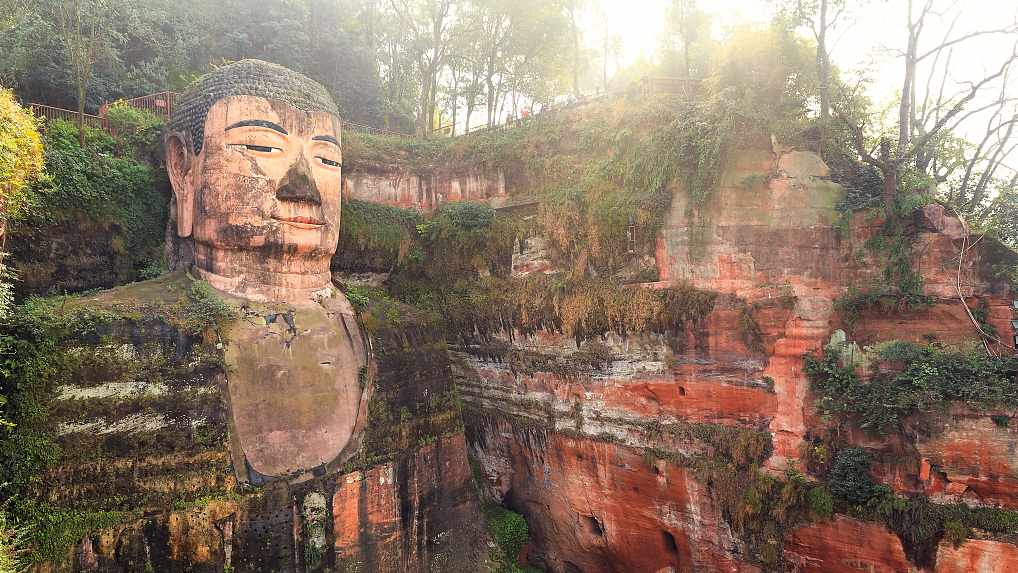
Destination
13:35, 29-Apr-2019
Sichuan touts its tourist attractions overseas
CGTN

The ancient Shu civilization serves as a platform for cross-cultural communication across the world.
On the back of Chinese officials' visit to Italy in March, where the two countries signed a memorandum of understanding to advance the Belt and Road Initiative (BRI), southwest China's Sichuan Province is pushing ahead with these intentions by promoting its culture and tourism in the European nation.
In March, an exhibition about China's ancient Shu civilization was held in Rome, Italy, along with other efforts to encourage cooperation in areas such as music, football and the preservation of cultural relics. At the Tianfu cultural and creative zone in Sichuan Province, an area dedicated to cultural exchanges between China and Italy is in operation. As of February 2017, the Sichuan government and the Ministry of Foreign Affairs and International Cooperation of Italy signed a joint statement saying they would build a Sino-Italian Cultural Innovation Park in Chengdu.
It is aimed for the park to become a landmark for bilateral cultural cooperation, establishing new brands and art institutes. The park will further promote mutual communication and exchanges between China and Italy as well as other BRI countries, officials said.
An area in particular that Sichuan wishes to promote to Italy and the rest of the world is its tourism. Jiuzhaigou Valley was identified as World Natural Heritage in 1992 and is popular among tourists along with scenic spots such as Mount Emei and Leshan Giant Buddha.

Leshan Giant Buddha in southwest China's Sichuan Province. /VCG Photo
Leshan Giant Buddha in southwest China's Sichuan Province. /VCG Photo
In recent years, the Sichuan government has made great efforts in building better tourism facilities, holding tourism festivals and recreational activities and inviting more overseas tourists to the province. Officials from its tourism bureau said that in 2018, Sichuan Province held tourism promotion activities in a number of countries including Austria, Thailand, Nepal, the United States, Japan, and Mexico, to promote Sichuan's tourist attractions including its giant pandas.

Giant pandas in southwest China's Sichuan Province. /VCG Photo
Giant pandas in southwest China's Sichuan Province. /VCG Photo
In the five years between 2013 to 2018, the number of tourists who visited Sichuan province increased from 2.09 million to 3.69 million. The Sichuan government said it will increase its number of tourism promotion centers in foreign countries in 2019. It will also further promote its local tourism products overseas, as well as cooperation with the Office of Chinese Language Council International to host events and exhibitions that will attract more overseas visitors to Sichuan.
The local culture and tourism bureau of Sichuan is working on an array of strategies to promote Sichuan's tourist attractions overseas. These include participating in international stationery and office supplies fair in Germany and hosting seminars to solicit expert advice on developing tourism. On April 8, Sichuan governor Yin Li visited Argentina and Spain with a delegation to introduce Sichuan scenic spots to people of the two countries and attended a series of promotional tourism events in a number of cities in these countries. During the delegation's stay in Spain, an MoU was signed between Sichuan and Castile on cooperation between enterprises, developing businesses and tourism.
Zhao Ping, president of Sichuan People's Association for Friendship with Foreign Countries, said that Sichuan needs to be unified in the way that it presents itself to the outside world.
Source(s): China Daily

SITEMAP
Copyright © 2018 CGTN. Beijing ICP prepared NO.16065310-3
Copyright © 2018 CGTN. Beijing ICP prepared NO.16065310-3